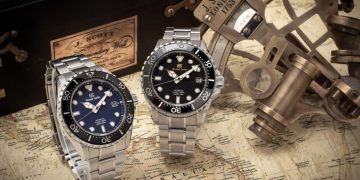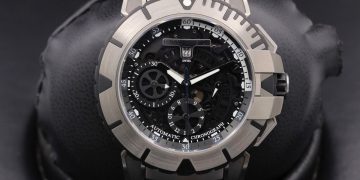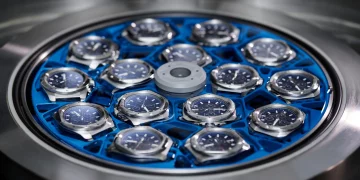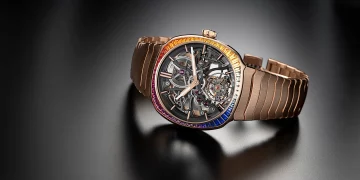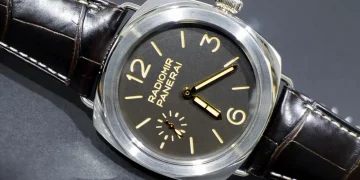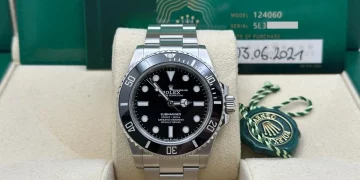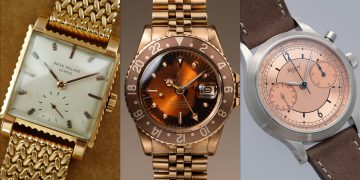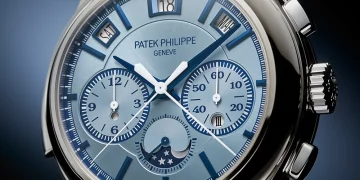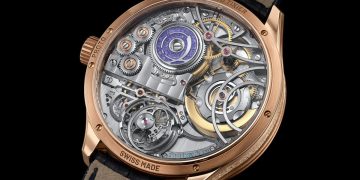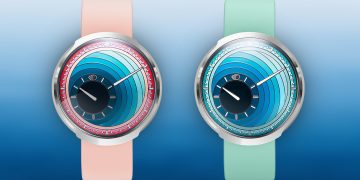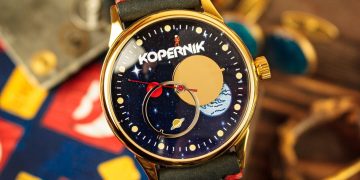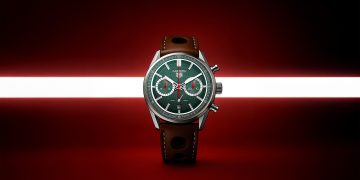Introduction
In the world of horology, the fusion of innovation and traditional craftsmanship has become a hallmark of high-end timepieces. Some watches manage to strike a rare balance between preserving the heritage of watchmaking while embracing the latest advancements in technology and design. This article explores how a specific timepiece—let’s consider an exemplary luxury model—successfully combines these two elements to create a watch that is both a marvel of modern engineering and a celebration of centuries-old techniques.
The appeal of this watch lies not only in its intricate mechanical movements but also in how it incorporates state-of-the-art materials, cutting-edge functions, and a profound respect for watchmaking tradition. By examining both the traditional aspects of its design and the innovations it introduces, we will explore how this timepiece embodies the seamless fusion of the old and the new in the world of luxury horology.
1. The Role of Traditional Watchmaking Craftsmanship
1.1 The History of Mechanical Watches
The roots of modern mechanical watchmaking stretch back hundreds of years. While the technology and techniques have evolved, the core principles of handcrafting and mechanical movements remain largely unchanged.
- Early Mechanical Watches: The inception of mechanical watches dates back to the 16th century when craftsmen first devised portable timepieces, which were often intricate and incredibly expensive. These watches were powered by a mainspring, and their construction required high levels of skill and precision. Early examples of this craftsmanship are revered for their delicate gears, balance wheels, and escapements—components still found in luxury mechanical watches today.
- Swiss Watchmaking Tradition: The tradition of Swiss watchmaking is legendary, and it’s a foundation that many luxury brands build upon. Companies like Patek Philippe, Audemars Piguet, and Rolex have preserved the craftsmanship of their heritage by maintaining the hand-finishing techniques that make their movements so sought after. Whether it’s hand-polishing the parts or assembling them under microscopic scrutiny, these traditional practices ensure that each watch exudes the expertise of generations.
1.2 The Art of Mechanical Movements
One of the key elements of traditional horology is the creation of mechanical movements that power the watch. These movements require expertise in various disciplines, such as gear cutting, balance spring regulation, and escapement design.
- Movement Design: Luxury watchmakers continue to refine mechanical movements through meticulous design processes. Whether it’s an automatic or manual movement, the precision with which gears are arranged, the escapement is designed, and the power reserve is optimized reflects the deep roots in traditional watchmaking.
- The Craft of Finishing: A significant aspect of traditional craftsmanship lies in the finishing of each part. Techniques like Côtes de Genève (Geneva stripes), perlage, and chamfering are still used today to enhance the aesthetic appeal of the movement. These finishing techniques not only increase the visual beauty of a watch but also reflect the high standard of artistry inherent in traditional craftsmanship.
2. Pioneering Innovation in the World of Watchmaking
2.1 Technological Advancements in Materials
Innovation in watchmaking has often been driven by advancements in material science. Over the past few decades, manufacturers have pushed the boundaries of traditional materials like steel and gold by incorporating lighter, more durable materials.
- The Use of Ceramic and Titanium: Many high-end watches have embraced ceramic and titanium for their cases and components. These materials offer scratch resistance and a lighter weight, giving watches a modern, innovative edge. For example, Rolex has introduced Cerachrom bezels, which are resistant to fading and scratching, while Richard Mille has used titanium and LITAL®-T® to create cases that are both lightweight and incredibly strong.
- Innovative Movements: In the pursuit of innovation, some brands have developed cutting-edge mechanical movements, such as the silicon balance spring introduced by Rolex and Patek Philippe. Silicon is an anti-magnetic, durable material that is highly resistant to temperature fluctuations, offering increased precision and reliability.
2.2 Introduction of Smart Features
Some luxury watchmakers have integrated smart features into their traditional mechanical designs, merging digital functionality with the tactile experience of wearing a fine watch.
- Hybrid Movements: While many high-end watch brands stick to purely mechanical designs, others have begun experimenting with hybrid models, which combine mechanical movement with smart technology. These innovations offer things like fitness tracking, notifications, and heart rate monitoring while still retaining a traditional mechanical movement. For instance, TAG Heuer has blended smart technology with its mechanical expertise to produce the TAG Heuer Connected smartwatch, marrying the traditional design of a chronograph with digital functions.
- Energy Efficiency and Innovation: Some luxury brands have also explored alternative power sources. Omega’s Co-Axial escapement is an example of a breakthrough that reduces friction in the movement, making it more efficient and less likely to wear out. This development is a perfect example of how traditional mechanical design can evolve with the introduction of new technologies to increase performance and longevity.
3. Design Philosophy: Blending Tradition with Innovation
3.1 Aesthetic Appeal and Design Choices
The design of the timepiece is perhaps the most visible manifestation of how traditional craftsmanship and innovation come together. The luxury watch industry is known for producing timepieces that offer both functional excellence and aesthetic beauty.
- Classic Design Elements: Luxury brands often incorporate classic elements that reflect the watch’s heritage. These include traditional Roman numerals, subdials, dials, and case designs that have been passed down through the ages. These timeless elements provide a sense of continuity and connection to the watchmaking past.
- Modern Influences: As innovation moves forward, these traditional designs are often reinterpreted with modern touches. For example, more contemporary interpretations of traditional chronograph designs have introduced sleek cases, larger dials, and unconventional materials. Additionally, innovations such as transparent sapphire case backs allow watch enthusiasts to observe the inner workings of the mechanical movement, enhancing the appreciation of traditional craftsmanship.
3.2 Functional Features: Innovations in Complications
Complications are the features of a mechanical watch that go beyond basic timekeeping. These features require high-level engineering and are often the result of both traditional methods and modern advancements.
- Perpetual Calendars and Tourbillons: The introduction of complications like perpetual calendars or tourbillons represents a perfect blend of tradition and innovation. These mechanisms require the utmost precision and expertise to craft. Brands like Patek Philippe and Audemars Piguet have continually refined these mechanisms, merging centuries-old techniques with new technologies to ensure they function flawlessly.
- Innovation in Chronographs and Dive Watches: Certain watches, such as those designed for professional divers or aviators, integrate innovations like water-resistant cases, rotating bezels, and high-accuracy chronographs with traditional manual or automatic movements. These innovations not only enhance the functionality of the watch but also ensure that they stand up to rigorous demands.
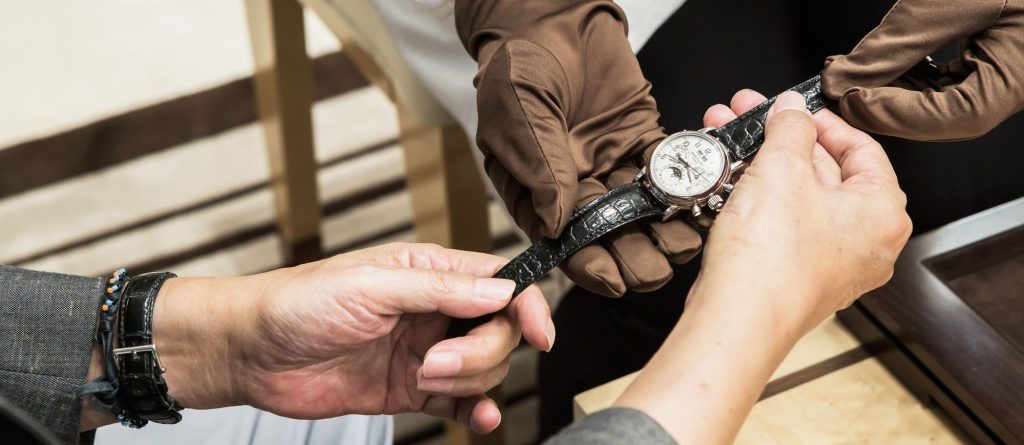
4. Sustainability: A Modern Tradition
4.1 Eco-Friendly Manufacturing Practices
In addition to technological innovations in materials, luxury watch brands are increasingly adopting sustainable practices to ensure that their timepieces are produced in an environmentally responsible manner. This is an area where modern technology and traditional craftsmanship are coming together to create a new form of luxury.
- Recycled Materials: Some luxury watchmakers are incorporating recycled materials into their watch designs. For example, Breitling has introduced the Superocean Heritage collection, where the brand uses recycled ocean plastic to create watch straps, promoting sustainability within the luxury watch industry.
- Energy-Efficient Manufacturing: The use of energy-efficient techniques in manufacturing is also becoming a key focus for luxury brands. Sustainable practices such as solar-powered watches (e.g., Seiko’s Solar series) integrate modern technology to reduce the environmental impact of the watch industry, while still maintaining a high level of craftsmanship.
5. Conclusion: The Future of Watchmaking
As we look to the future of horology, it’s clear that the integration of innovation and traditional craftsmanship will continue to define the luxury watch industry. The ability to combine centuries-old watchmaking techniques with modern technology not only ensures that these timepieces remain relevant but also enhances their prestige and desirability.
In conclusion, the watch in question exemplifies how these two elements—innovation and tradition—can coexist harmoniously, creating a timepiece that is both technically advanced and historically significant. This fusion of old and new not only honors the art of watchmaking but also pushes the boundaries of what is possible in the world of high-end horology.


